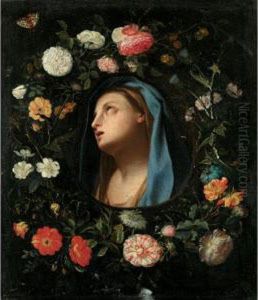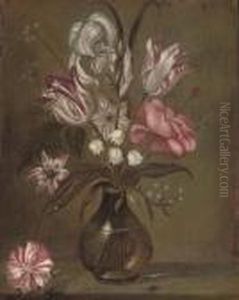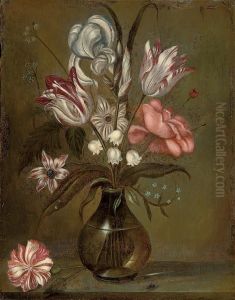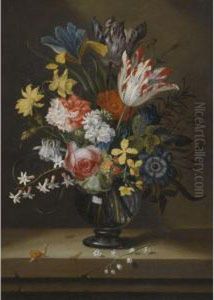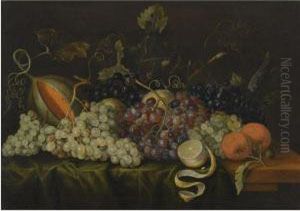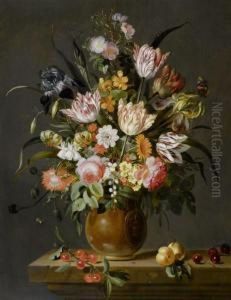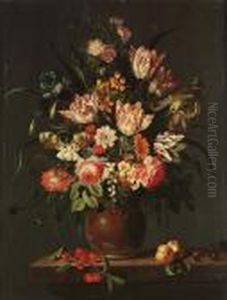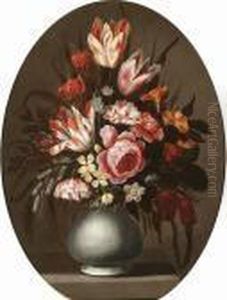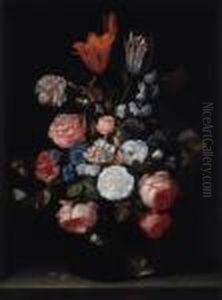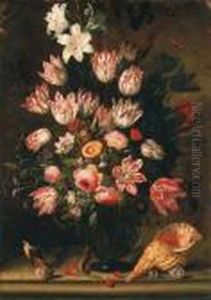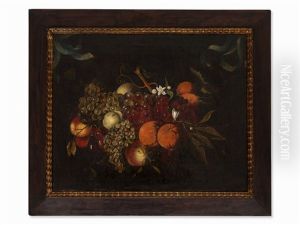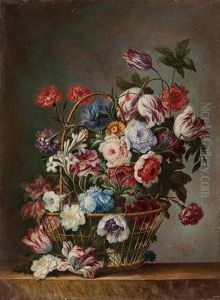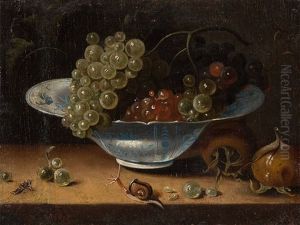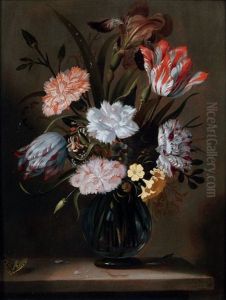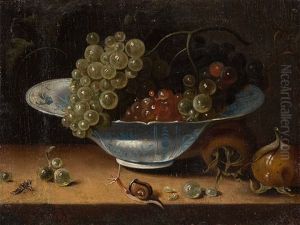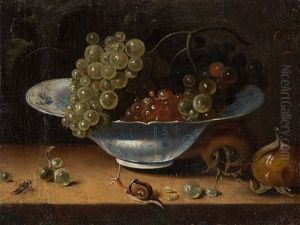Jacob Marrel Paintings
Jacob Marrel was a German still life painter active during the Baroque period. Marrel was born in Frankfurt am Main in Germany in either 1613 or 1614. He is best known for his detailed and colorful still lifes, particularly his flower pieces, which were influenced by the Dutch still life tradition.
Marrel received his artistic training from the still life painter Georg Flegel, who was also based in Frankfurt. Marrel’s work was influenced by the Dutch Golden Age, a period during which still life painting flourished. He is often associated with the circle of artists in Utrecht known as the Utrecht Caravaggisti, although his works are distinct from theirs in terms of subject matter and style.
In 1634, Marrel moved to Utrecht where he became a pupil of Jan Davidsz. de Heem, an influential Dutch still life painter. Marrel's works from this period show a strong influence from de Heem's elaborate and ornate compositions. After spending a few years in the Netherlands, Marrel returned to Frankfurt, where he became a successful and sought-after painter.
Marrel's still lifes are characterized by their vibrant colors and intricate detail. He often included a variety of objects such as flowers, insects, and seashells, which were carefully arranged to create a harmonious and aesthetically pleasing composition. He was also known for his 'tulip books', albums containing studies of tulips, which were highly prized during the tulip mania of the 17th century.
In addition to his still lifes, Marrel also produced a number of allegorical and mythological works, though these are less frequently encountered. Marrel's influence extended to his students, the most notable being Maria Sibylla Merian, who became a prominent naturalist and scientific illustrator, as well as his stepdaughters, Johanna Helena and Dorothea Maria Graff.
Marrel passed away in Frankfurt in 1681. His work continued to influence still life painters in Germany and the Netherlands, and today, his paintings can be found in numerous museum collections around the world.


